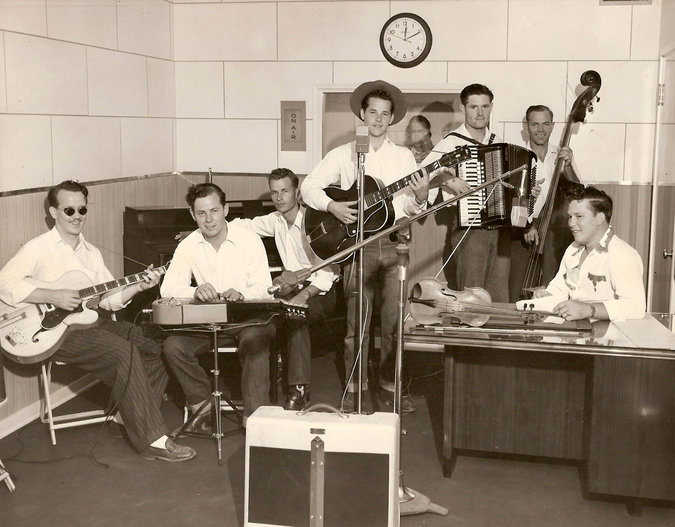
While the musical biopic today suffers from inescapable story arcs and tired imitations, thankfully a good story remains that way when told by those who actually lived it. Consider well-made music docs a personal sweet spot — a blend of archival footage, a famous record, and an aged, accented character explaining how, when they tweaked a guitar amp then threw it down a city sewer, the song’s tone really took off. “Billy Mize and The Bakersfield Sound” adopts this path, charting the rise of a unique style in the mid-‘50s Southern California country scene, but more importantly it highlights one of the pivotal figures that helped it thrive.
Billy Mize is a name missing from mentions of the era that spawned Buck Owens and Merle Haggard, yet here is a documentary that has you smiling at each cultural icon that respected it. Names like Dean Martin, The Beatles, and Elvis Presley surrounded Mize and the sound that he and other acts perfected — hazily defined, but “definitely using a guitar and fiddle”, as one interviewee says.

The film is also directed by Mize’s grandson, William J. Saunders. That’s important mainly for two reasons: access and respect. Gathering a great deal of home video footage and interviews with friends and family—most of whom had to reckon with Billy’s highs and lows growing up—Saunders achieves a comfortable intimacy with those on-camera. One of the subjects is Mize, now 85 and still living in CA; he’s described as a quiet fellow when not on-stage – partly due to his shy personality, but more because he partially lost his voice at 59 after a stroke.
Mize’s medical troubles lend the documentary a lived-in and current feel; it’s not just titans of country gabbing about their early trials and tribulations, it’s a poignant portrait of a man figuring out his life when his prime instrument has been stripped from him.

Saunders manages to conduct a subtitled sit-down interview with Mize, who was able to build his voice up to a raspy grumble. The throughline, it turns out, is family: when every act took to months of touring if they wanted to make a living and name for themselves, Mize chose the TV route, racking up 3,000 miles a week driving to LA and Bakersfield for daily music shows and variety hours.
Tragedy and substance abuse are present in many show business stories, and Mize’s is no different. But the same central aspects to Saunders’ approach—access and respect—also hobble it somewhat by remaining too close to the subject. “I’d rather not,” Mize whispers when asked about details from his past. He really doesn’t have to respond—his eyes do the heavy lifting—but Saunders repeatedly settles for the surface-level tale elsewhere in exploring Mize’s life events. Mize’s ex-wife Martha is one such case, a lively woman who hints at a greater wealth of feeling about her and Mize’s past than she initially lets on.

The scattered direction deepens as Mize’s medical progress intersects with his professional life. Saunders uses Mize’s forthcoming 80th birthday party as a framing device and source of tension—the challenge is posed whether Mize will attempt to sing once more—but again, the matter is rarely addressed. One wonders whether simply the footage wasn’t there or if Saunders had it in and decided to cut it out – however, it’s another aspect that highlights the two films Saunders aims to make: a tribute to his grandfather’s contributions to country music and a journey of recovery. Neither quite land with any weight as a result.
That doesn’t mean the film’s lighter sections, featuring musicians ribbing one another, sharing their processes, and showcasing their music, isn’t greatly entertaining, and as an investigation into country music there’s a unique glance around at some of the history and people involved. Saunders’ film will have you looking twice at music photographs in the future, noticing Mize in the spots you’d gloss over before; but as a tribute to a should-be-famous figure, the film frustratingly stays static above the intriguing core of Mize’s life. [C+]

